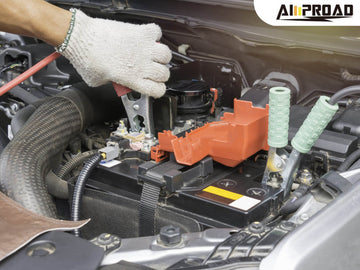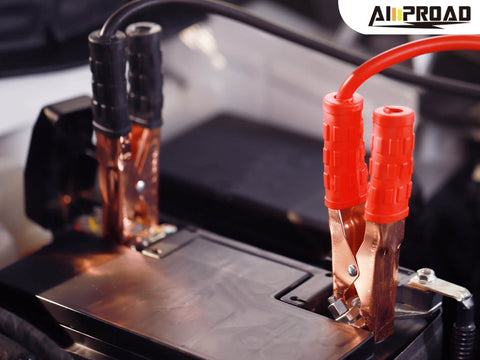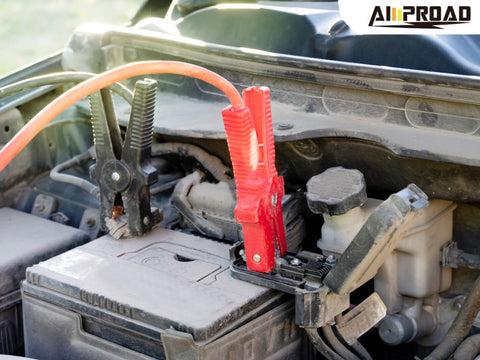
Popped the hood, dead battery? While jumpstarting might be your first instinct, especially with an older car, newer vehicles with advanced electronics require caution. The jolt of a jump start can be risky for these complex systems. This article explores the potential problems with jumpstarting newer cars. We'll delve into the delicate dance of voltage, the importance of stable power for modern car computers, and how jumpstarting can disrupt these systems. We'll also discuss safer alternatives to get you back on the road without risking expensive repairs to your car's sensitive electronics.
Why might jump starting a car be necessary?
Jump starting a car might be necessary if the vehicle's battery is dead or too weak to start the engine. This can happen due to various reasons such as leaving lights on, extreme weather conditions, or simply an old battery reaching the end of its lifespan. Jump starting allows you to provide a temporary power boost to the battery, typically from another vehicle with a functional battery or a portable battery booster device. It's a quick and effective way to get the engine running again so that you can drive the vehicle to a mechanic for further inspection or replace the battery if necessary. However, it's essential to follow proper safety procedures and ensure correct connections to avoid damaging the vehicle's electrical system or causing injury.
Potential Issues with Jump Starting Newer Cars

Jump starting a car can be a lifesaver when you're stranded with a dead battery, but it's not without its risks, especially with newer vehicles equipped with advanced electronics. Here are some potential issues to consider:
How can jump starting cause voltage spikes?
Jump starting a car involves connecting the battery to another vehicle or a portable jump starter. During this process, if the voltage supplied by the donor vehicle or jump starter is higher than the nominal voltage of the recipient vehicle's electrical system, it can cause voltage spikes. These spikes occur due to sudden fluctuations in electrical potential and can potentially damage sensitive electronic components.
What are the potential consequences of voltage spikes for a car's electronics?
Voltage spikes can lead to various issues with a car's electronics. They may cause damage to electronic control units (ECUs), sensors, and other components that rely on stable voltage levels for proper functioning. Common consequences include blown fuses, malfunctioning control modules, and erratic behavior of electronic systems such as the engine management system, transmission control module, and infotainment system.
How do power fluctuations from a jump start impact a car's electrical systems?
Power fluctuations during a jump start can disrupt the normal operation of a car's electrical systems. Rapid changes in voltage levels can overwhelm components designed to operate within specific voltage ranges. This can result in component failures, corrupted data stored in electronic modules, and degraded performance of various vehicle systems.
How might jump starting affect a car's start-stop technology?
Start-stop systems, which automatically shut off the engine when the vehicle comes to a stop and restart it when the driver releases the brake pedal, rely on complex electronic controls. Jump starting a car with start-stop technology can potentially disrupt the operation of these systems. Voltage spikes or fluctuations may cause the start-stop system to malfunction, leading to issues such as failure to restart the engine or unintended engine shutdowns.
Can a jump start damage the computer systems that control safety features in newer cars?
Modern vehicles are equipped with advanced safety features controlled by sophisticated computer systems. Jump starting a car incorrectly or using inappropriate jump starting procedures can expose these systems to potential damage. Voltage spikes or power surges during the jump start process may disrupt the operation of safety-related ECUs, compromising the functionality of features such as anti-lock braking systems (ABS), electronic stability control (ESC), and airbag systems. Damage to these critical safety components can compromise the overall safety of the vehicle and increase the risk of accidents.
While knowing how to boost a car using jump starter is important, for jump starting a car is often necessary in emergencies, it's essential to proceed with caution, especially with newer vehicles. Following proper jump starting procedures and using quality equipment can help minimize the risk of damage to sensitive electronics and ensure a safe and successful jump start.
Alternatives to Jump Starting

Why might calling for roadside assistance be a safer option than jump starting a newer car?
While jump starting a car can be a quick fix for a dead battery, newer cars with complex electronic systems present unique challenges. Calling for roadside assistance may be a safer option for several reasons:
- Risk of Voltage Spikes: Jump starting a car improperly can lead to voltage spikes, which may damage sensitive electronic components in newer vehicles. Roadside assistance professionals are trained to follow correct procedures to minimize the risk of such damage.
- Expertise and Equipment: Roadside assistance technicians have the expertise and specialized equipment to safely jump start vehicles, including newer models with advanced electronics. They can assess the situation, identify any underlying issues, and take appropriate action to avoid damaging the vehicle's systems.
- Avoiding Further Damage: Attempting to jump start a car without the necessary knowledge and equipment can potentially cause further damage to the vehicle's electrical system. Roadside assistance professionals can diagnose the problem accurately and recommend the most appropriate solution, preventing additional harm.
- Comprehensive Assistance: Roadside assistance services often provide comprehensive support beyond jump starting, such as battery testing, diagnostics, and towing if necessary. This ensures a thorough evaluation of the vehicle's condition and appropriate assistance to address any underlying issues.
Overall, while jump starting a car may seem like a simple solution, the complex electronics in newer vehicles require careful handling to avoid damage. Calling for roadside assistance from trained professionals can provide a safer and more reliable option for resolving battery-related issues.
What are the advantages of using a portable jump starter designed for modern cars?
Using a portable jump starter specifically designed for modern cars offers several advantages:
- Compatibility: Portable jump starters designed for modern cars are equipped with features tailored to the needs of newer vehicles, such as built-in safety mechanisms to prevent voltage spikes and damage to electronic components.
- Convenience: Portable jump starters are compact and easy to carry, allowing drivers to quickly address battery-related issues without relying on external assistance. They are especially useful in situations where access to roadside assistance may be limited.
- Versatility: Many portable jump starters come with additional features, such as built-in flashlights, USB ports for charging electronic devices, and air compressors for inflating tires. This makes them versatile tools to have on hand for various roadside emergencies.
- Peace of Mind: Having a portable jump starter in the car provides drivers with peace of mind knowing that they have a reliable backup solution for starting their vehicle in case of a dead battery. This can be particularly reassuring when traveling long distances or in remote areas where assistance may be scarce.
When should you consider jump starting a newer car as a last resort?

Jump starting a newer car should be considered a last resort in certain situations where other options are unavailable or impractical. Here are some scenarios when jump starting should be approached with caution:
- Repeated Battery Failures: If a newer car experiences frequent battery failures despite proper maintenance and charging, it may indicate underlying issues that need professional diagnosis. Jump starting the vehicle repeatedly without addressing the root cause can lead to further damage to the electrical system.
- Signs of Electrical Problems: If the car exhibits symptoms of electrical issues, such as flickering lights, dashboard warning lights, or erratic behavior from electronic components, attempting a jump start may exacerbate the problem. In such cases, it's advisable to seek professional assistance to avoid causing additional damage.
- Unknown Battery Condition: Jump starting a car with an unknown battery condition can be risky, especially if the battery is old or damaged. In these situations, attempting to jump start the vehicle without knowing the state of the battery may result in ineffective charging or potential damage to the vehicle's electrical systems.
- Safety Concerns: Jump starting a car can pose safety risks, particularly in hazardous conditions such as inclement weather or busy roadways. If the situation presents significant safety concerns, such as limited visibility or the risk of collision, it's safer to wait for professional assistance or move the vehicle to a safer location before attempting a jump start.
- Lack of Proper Equipment: Jump starting a car requires the use of appropriate equipment, including jumper cables and a functional donor vehicle or portable battery booster pack. If these resources are not readily available or if the equipment is inadequate or damaged, attempting a jump start may not be effective and could potentially cause harm to the vehicle or individuals involved.
All in all, while jump starting a newer car can be a temporary solution to a dead battery, it should only be considered as a last resort in certain situations. It's essential to exercise caution and prioritize safety, particularly when dealing with electrical issues or uncertain battery conditions. If in doubt, seeking professional assistance from a qualified mechanic or roadside assistance service is always advisable.


